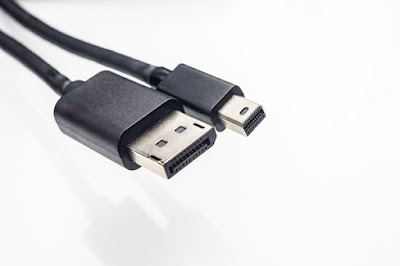Along with the advancement in technology, the electronic components are also changing very rapidly. You may have seen many new connectors in the market. In this article, we have discussed the DisplayPort Cord which is also known as the digital display interface. This cord standard is used and approved by the well-known names in the market like Apple, HP and Dell.
DisplayPort cables are different from conventional outdoor cat6 cables as these cables are used with audio and video devices. The DisplayPort Cables have the ability to support the HD video resolutions of up to 2560 x 1600 along with 10-bit color. Many professionals are using this cord in their companies. These ports are capable of providing connections between the external as well as internal displays. Moreover, these cords can also provide displays in slim and cheap manner. In this article, we have provided the significance of display port cables.
Provides proficiency:
If you choose a good quality DisplayPort cable, then it can also drive the display panels. It has the capability of replacing LVDS (low voltage differential signaling). You do not need to have a VGA silicon and DVI controller as DisplayPort Cord can serve the purpose. Hence, in this way you can save money.
Cabling is not required in display areas or the PCs body if the internal display port wiring is used. Display Port has the ability to provide a directional channel hence the performance will also boost. It can also perform some other functions like notebook backlighting control.
Replacing DVI
DisplayPort is capable of replacing DVI on PCs and monitors. If you look at its anatomy, then you will come to know that it consists of a USB size form factor. It also contains a self-latching mechanism. The Display Port cable is much slimmer than DVI or SVGA cables.
The users want a good picture quality. There has been a lot of saturation in DVI. Moreover, it has a bandwidth of 1920x1200. Hence, it cannot be used for providing HD services. On the other hand, you can use DisplayPort cables for transmitting data up to the rates of 8.64 Gbits. Moreover, the DataPort also has an auxiliary bidirectional data channel. This channel is capable of carrying data for touch panels, webcams and microphones.
DisplayPort can be connected easily to DVI, VGA or HDMI with the help of adapters. But Display Port cannot be converted into analog television connections such as component video, and s-video. According to professionals, the future of DisplayPort is very bright. Many more exciting features can be incorporated in these cables.
However, we know that DisplayPort was launched to replace DVI, VGA and interfaces of internal LVDS. HDMI was used to overcome the limitations posed by S-Video interfaces and Component. Now the question is that which one is a better choice?
Display Port as well as HDMI both can fulfill your requirements related to video cable and adapter. Do not forget to share your valuable suggestions in the box below. You can also ask questions related to the article.

No comments:
Post a Comment